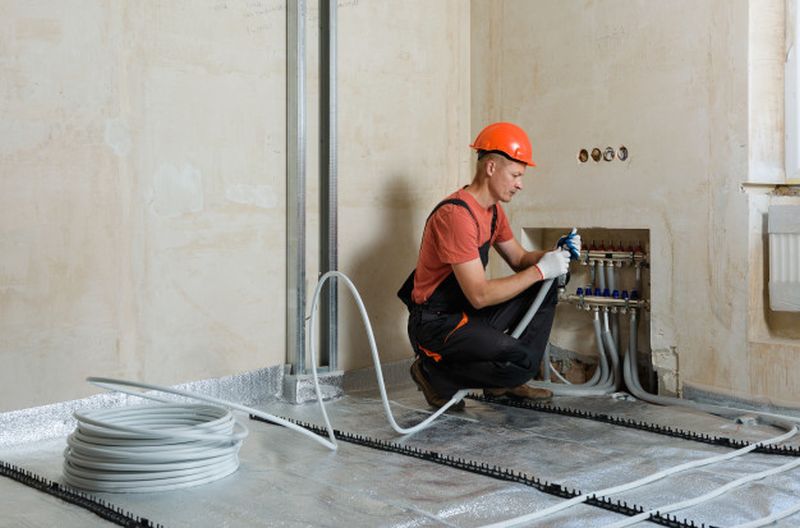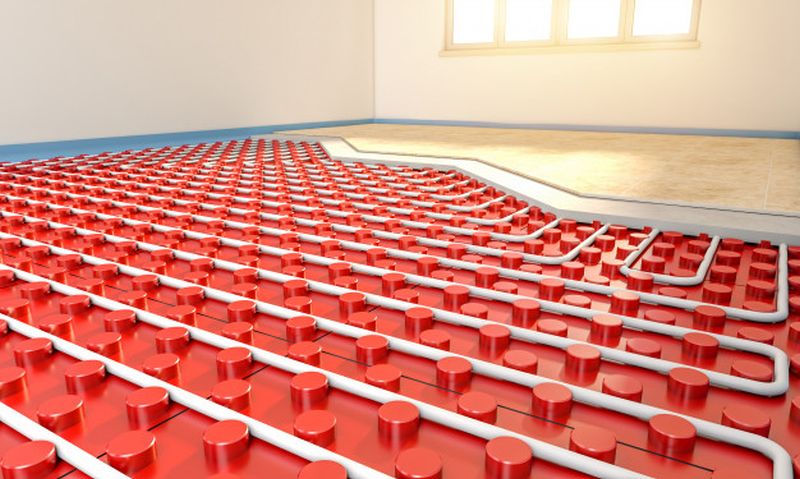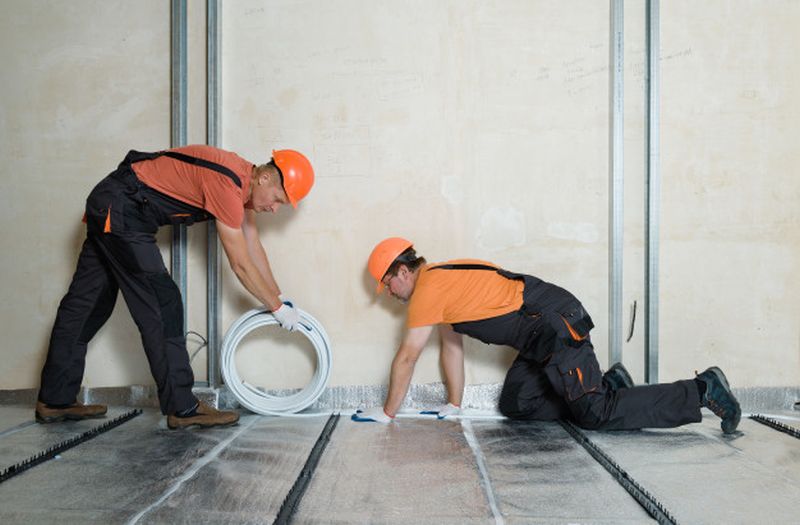
Radiant floor heating also referred to as floor heating, is a luxurious feature and a popular trend in homes today. The system relies on heating elements installed beneath the floors. Once they are turned on, they not only heat up the floors but also the rest of the room through radiation.
This system does not rely on air circulation to heat a room; thus, it is considered mainly in renovations that focus on clean, comfortable, and design-led living. But what are the pros and cons of a floor heating system?
Pros of Floor Heating

-
Energy Efficient
Unlike traditional radiators that need to be heated at extremely high temperatures of between 149 and 167 degrees Fahrenheit, floor heating only requires 84 degrees Fahrenheit or less to warm the room. They use up less energy and thus keep energy bills low.
-
No ‘Cold Spots’
Moreover, because radiators heat the air nearest to them first, the room is prone to ‘cold spots.’ Radiant heat offers warmth from the floors up throughout the room. There will be no cold spots or stuffiness. Thanks to the efficient way it warms the room, radiant heat offers a saving of 15% on energy bills.
-
Effortless to Run
The system requires nearly no maintenance and comes with a 30-year guarantee. A thermostat can be installed to make the system run automatically. It is also possible to program the heat to come up at specific times of the day.
-
Design Freedom
Underfloor heating does not take up wall space. They are installed under the floors, which means they don’t affect your floor layout. The absence of a radiator allows you to decorate the walls the way you want. It is also good to note that it works with all floor coverings.
-
Affordability
People usually think that radiant floor heating will take them a lot of money. Indeed, installing that type of heating may come with higher installation costs. We will explain that later. However, if people consider it as a long-term investment, they won’t hesitate to spend their money. It will help people ensure amazing savings on their heating bills.
Cons of Floor Heating

-
High Installation Cost
It costs about $10 to $20 per square foot to install the heating system. Moreover, you need to hire a professional, which will cost you between $200 and $250 extra. Water-based systems cost two to three times more than electric underfloor heating systems.
-
Installation Time
A self-levelling compound has to be installed over the heating system. This may take up to two days to dry.
-
Floor Height Issues
A floor heating system will increase the floor height by at least ½ an inch. Installing insulation boards will raise the floors even further.
All things considered, underfloor heating is an excellent investment for a modern home. For a quote or more information, contact Heavenly Heat Inc. today.
How Many Radiant Floor Heating Options Are There?

Here comes another essential part that people should know. There are two types of radiant floor heaters that people can purchase. One works thanks to the water, while the other one works thanks to electricity. It is hard to say which of these two options is better. They are both an excellent option for people that plan to renovate their homes or build up a new working space.
Still, there is also one more option that is becoming more and more popular. Many people are deciding on a hybrid radiant heating option. In that case, electric systems are not the primary source of heating. For instance, if people want to use a central heating system as a primary option, hybrid radiant floor heating may be a good option.
Types of Floor Finishes that Are Suitable with Radiant Heating
All types of floor finishes are suitable with some type of radiant heating. The best results will probably get people that have stone and tile floor finishes. These two materials already have good heat-conductive properties. On the other hand, wood flooring requires a bit more analysis. It is not a secret that all types of wood floor finishes can be a good option. However, the one with thinner and denser wood will allow better performance of the heating systems.
There is another piece of advice we would like to share with people that have stone and tile floor finishes. They can be an excellent choice for kitchens and bathrooms. Tiles, for instance, require a short period of time, and people won’t have to wait for hours to get the comfort we previously talked about.
Things People Should Put Into Consideration before Installing Radiant Floor Heating

People usually hesitate to spend their money because of one reason. They understand the benefits that radiant floor heating can bring. However, they are not sure if they are the best possible option for them. It would be unfair to say that this type of floor heating is always going to be an excellent choice. There are three things people should put into consideration.
The first factor that people should have in mind is the type of space where they plan to install it. Despite that, they also need to determine the size of that space as well as ceiling heights. Finally, the third important thing is a type of floor finishing. However, we already explained that part.
People add radiant floor heating for two different reasons. Those that only want to renovate their living space should use electric systems. On the other hand, water systems may be a better solution for new-build spaces as well larger spaces. Electric radiant floor heating features lower floor build-up height. That is the reason why they are not the best option for larger spaces.
















